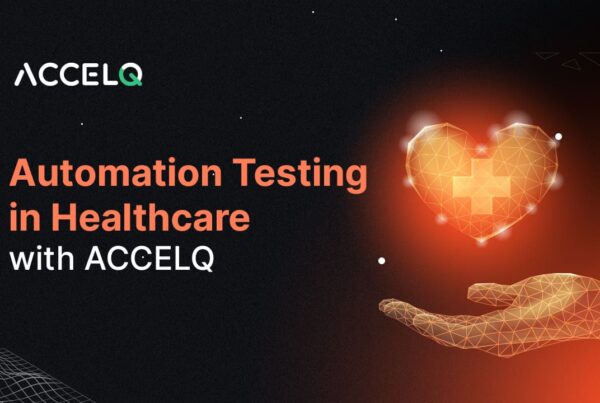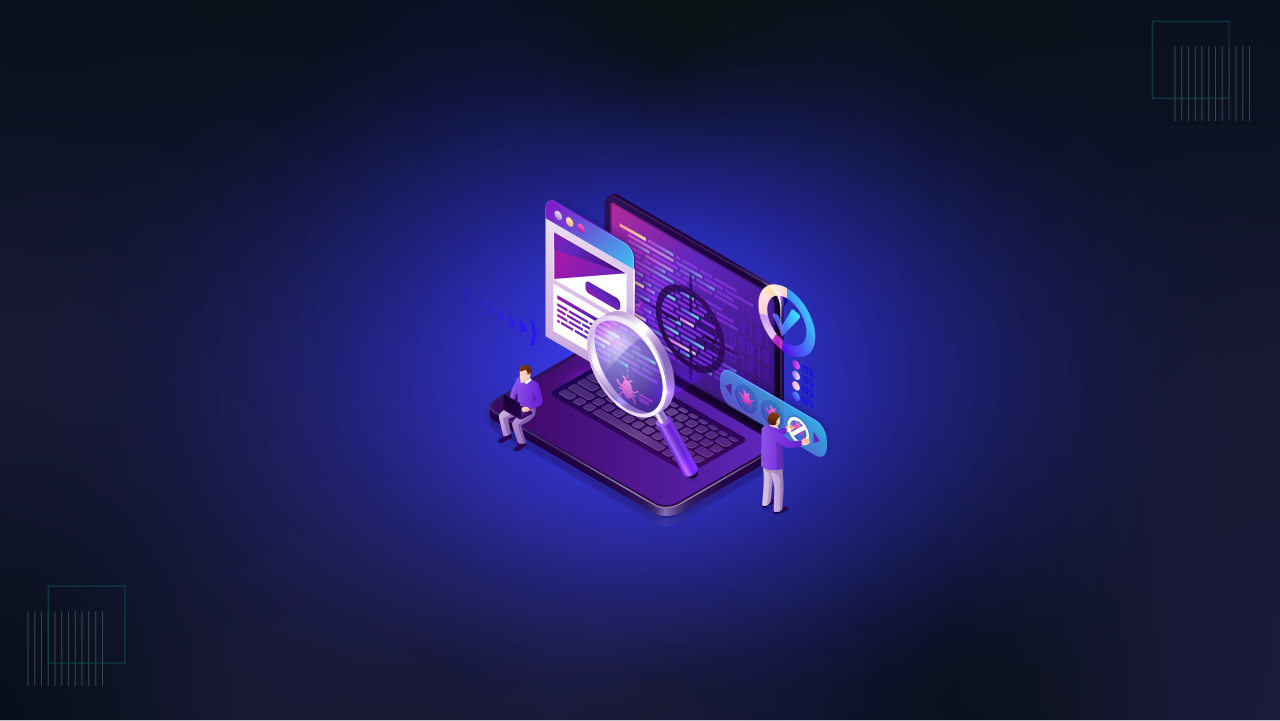As software eats the world, it becomes clear that there is no place for bug-prone or slow software applications. As the applications ecosystem evolves, it also becomes hard to ignore the rise of SaaS applications.
SaaS applications are built for scalability and performance and can be frequently updated and upgraded. In addition, their availability over the internet enables organizations to bypass the need to install and run applications on individual computers. However, with performance, availability, and security driving product adoption and advocacy and simultaneously influencing product outcomes, shifting testing left become essential.
Given the multiple variables at play and the design architecture of SaaS applications, it makes sense to add a robust test automation strategy to the testing toolkit. This adds velocity to testing and increases confidence in the applications while ensuring they perform as designed and deliver the expected outcomes.
In this blog, let us understand:
What is SaaS testing?
As cloud computing and SaaS applications become eponymous across industries, testing these applications thoroughly is non-negotiable. SaaS testing is the process of testing these on-demand applications or web-based software systems.
SaaS application testing is different from testing on-premises applications since it needs access to browsers. Therefore, this type of application testing is also centered around web application testing methodologies.
SaaS application testing involves testing performance, security, data integration, scalability, reliability, and availability, amongst others. In addition, a SaaS testing plan must test these applications against real-world traffic in cloud environments to confirm that the application is available and optimized for concurrent users at all times.
The Challenges of SaaS Application Testing

Before we dive into SaaS testing best practices, it is important to understand the potential challenges in testing SaaS products. Some of these challenges can be identified as:
- Short development cycles and increased product enhancements demand the QA and testing team stay on-cycle with product development.
- SaaS application testing must pay close attention to integration testing and security testing as these applications are web-based. However, maintaining the integrity and privacy of test data and managing multi-user behaviors within the system can be challenging when migrating and integrating SaaS applications.
- The increased use of APIs in SaaS products to deliver greater value demands a specific focus on API testing. However, this can become a complex, time-consuming affair for QA as they need to identify every customer scenario to develop the correct test cases.
- Frequent updates and releases to improve product experience allow less time for QA and testing to check the security and validity of the application. SaaS testing must entail testing all the licensing factors, functionality, number of users, and usage for each new release.
SaaS Testing - Best Practices
Thoroughly testing a SaaS application is a given in a software-driven world. Testing also shifts left and is continuous for SaaS applications, given the use of DevOps to develop these applications. Clearly, test automation is essential to drive successful testing strategies.
While it is essential to run a wide gamut of tests for these applications, here are a few areas to pay special attention to.
- Security testing: Robust security testing of SaaS applications is essential to determine that the application is secure from digital attacks and vulnerabilities. Developing a comprehensive testing strategy that uncovers any weakness in the application, designing robust test cases, and increasing testing area coverage become test automation essentials. Enterprises thus must increase their testing footprint and develop the capability for intelligent test planning to expand testing coverage.
- Performance testing: SaaS applications are built for performance. As such, developing exhaustive performance testing capabilities and testing each application module to ensure the expected throughput is crucial. Identifying the dependencies of plug-ins or APIs, the key performance indicators, the operating system demands, and all those other variables that influence the SaaS application’s stability, speed, and responsiveness have to be a part of the test automation plan with robust test cases in place.
- API testing: Multiple APIs integrate with SaaS applications to make them work as intended. Building comprehensive test cases that capably test API and data integration within the application is fundamental to testing SaaS applications. The accuracy of API documentation must also be reviewed, and the API interfaces checked for scalability, security, reliability, and performance. API testing is essential for SaaS applications, given their complexity and structure. API testing is also critical since APIs need Regression level automation maturity.
- Stress Testing and Load Testing: SaaS applications must perform and remain available under differing loads. Thus, SaaS testing should conduct stress and load testing to see how the application manages stress and load more than its designed operational capacity. It must evaluate how the application responds to the load and the outcomes it provides. Automating stress and load testing becomes essential for comprehensive testing and ensuring that application performance doesn’t crumble under pressure.
- Cross-browser functionality testing: SaaS applications are famous for their versatility and accessibility. Since they are internet-delivered, they have to be browser compatible. Comprehensive cross-browser functionality testing certifies the minimum number of versions it can support in that browser, ensure compatibility with different browsers, and identify the minimum version that can run successfully on the browser.
Apart from these tests, reliability testing to reduce the risk of failure at Real-Time deployment, regression testing following any data migration, update or upgrade, Black Box and White box testing as a part of component testing are some of the other tests to pay close attention to.
How to Choose the Right SaaS Testing Tool?

Automating SaaS application testing and shifting testing left is imperative to enhance test coverage and roll out flawless SaaS products. However, not all test automation tools are created equal in the SaaS testing tools universe.
Instead of comparing tools, here are some features a comprehensive SaaS testing tool must-have.
- Natural Language, No-Code Automation with self-healing capabilities to increase test coverage while reducing time in writing comprehensive testing plans. Natural language editors allow writing test automation logic in English, making it easier to automate thoroughly. Technologies such as AI and ML can automate all aspects of the quality lifecycle, from test design to test planning & execution, and also accelerate the testing velocity.
- Should allow manual testers and business analysts to automate tests without any programming.
- Enable testing teams to achieve in-sprint automation with functional virtualization of the test application. Having native integration with CI/CD tools like Jira, Jenkins is important to ensure build verification and ensuring that the test automation platform is DevOps and CI ready.
- Smart test management capabilities along with automated test planning to add to testing speed and agility. Test asset management & inbuilt traceability with requirements and analytics-based algorithms are essential to driving automated test planning while ensuring comprehensive coverage.
- Provide 360-degree validations and allow the testing team to take a functional approach to API automation without taking help from specialists.
- Should enable manual testing and augment these efforts by allowing fluid test creation, provide AI-based test management with a holistic view of QA progress, allow data-driven testing, and ensure asset sharing and version control.
- Support multiple formats on API for comprehensive API testing.
As SaaS products become increasingly mainstream and handle business-impacting processes, SaaS test automation must become more intelligent. Lowered testing load, more comprehensive test coverage, intelligent testing, and stellar products become automatic consequences of these efforts.
Connect with us to see how our AI-powered, codeless test automation platform can drive continuous testing for your SaaS applications.
This Might Also Interest You...
 Healthcare Test Automation with ACCELQ
Healthcare Test Automation with ACCELQ
Healthcare Test Automation with ACCELQ
 Test Automation – Expectation Vs. Reality
Test Automation – Expectation Vs. Reality
Test Automation – Expectation Vs. Reality
 Challenges in Automating Flutter Apps Using the Traditional Framework
Challenges in Automating Flutter Apps Using the Traditional Framework
































